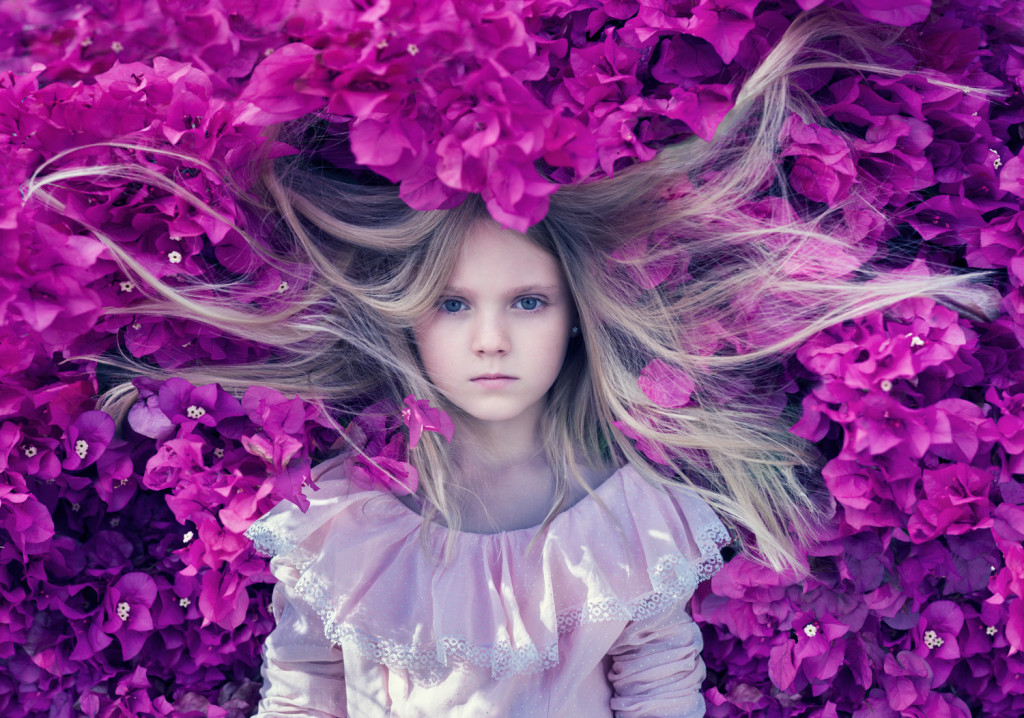
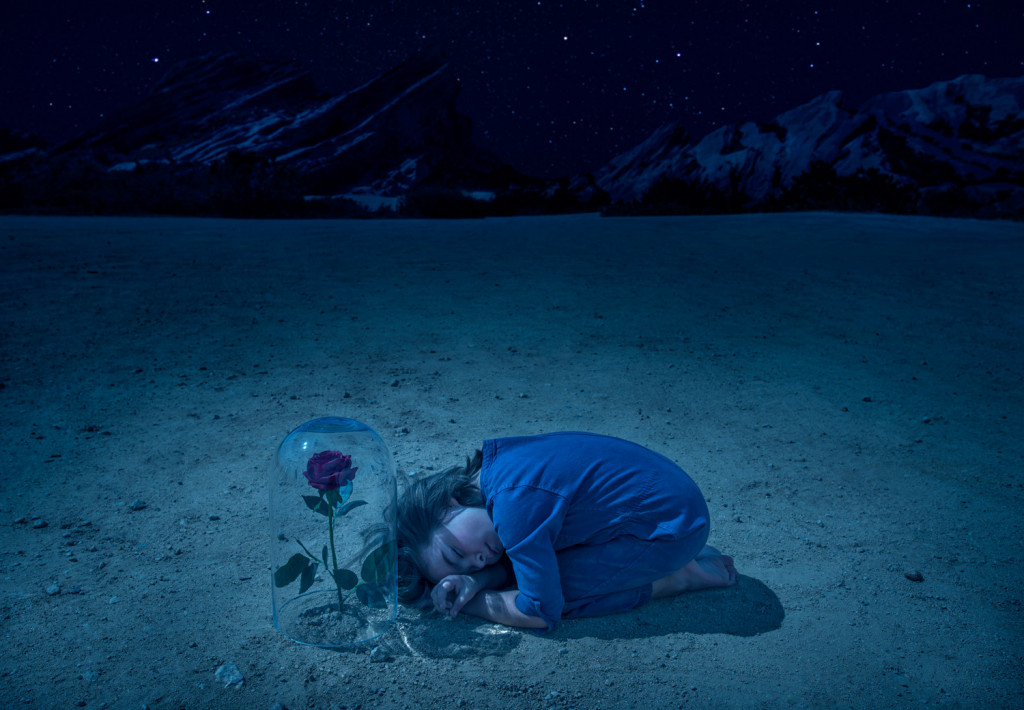
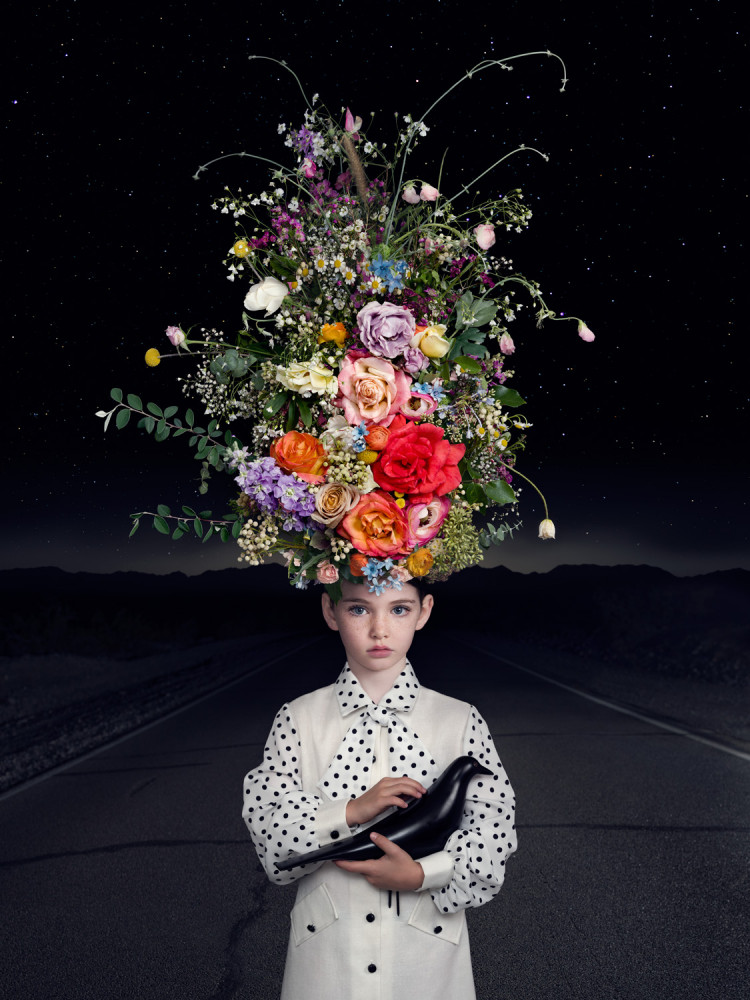
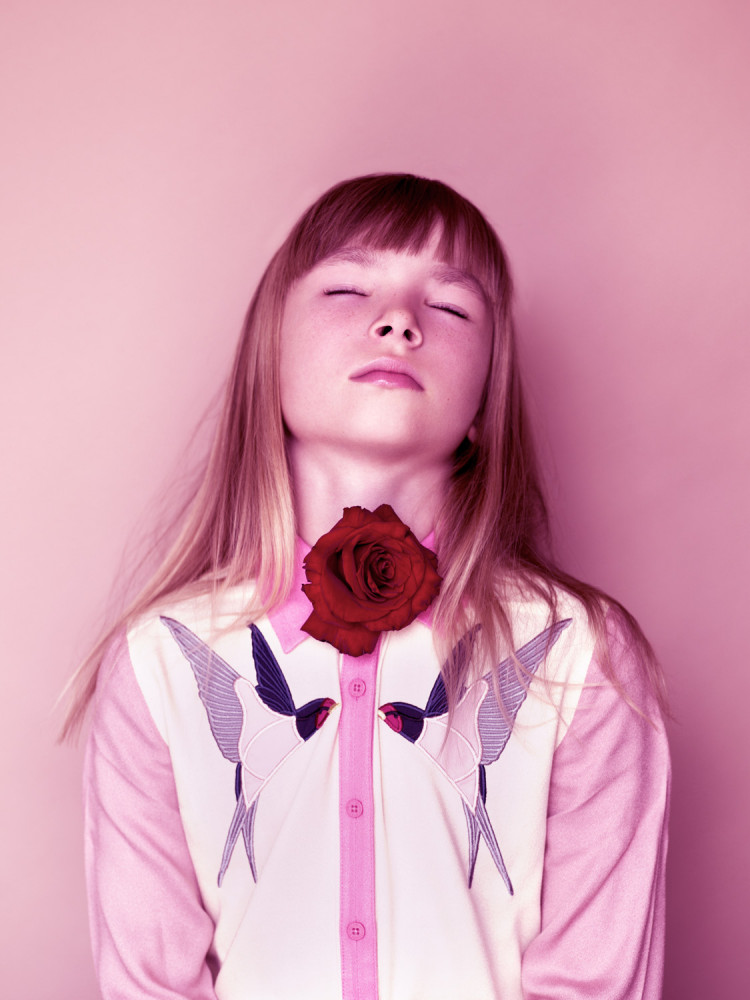
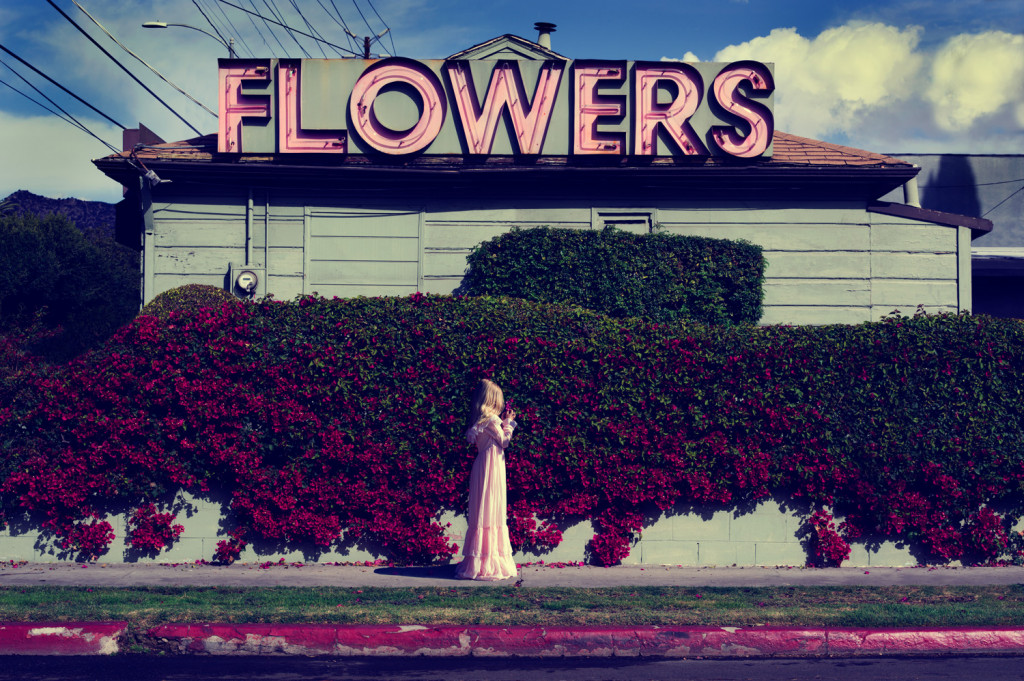
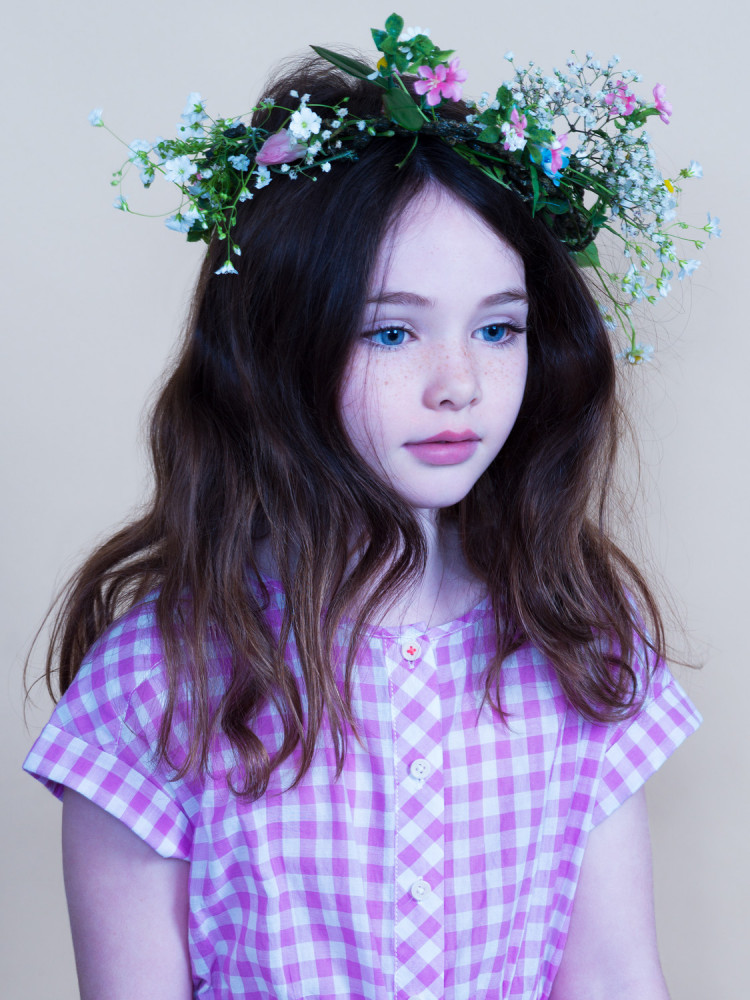
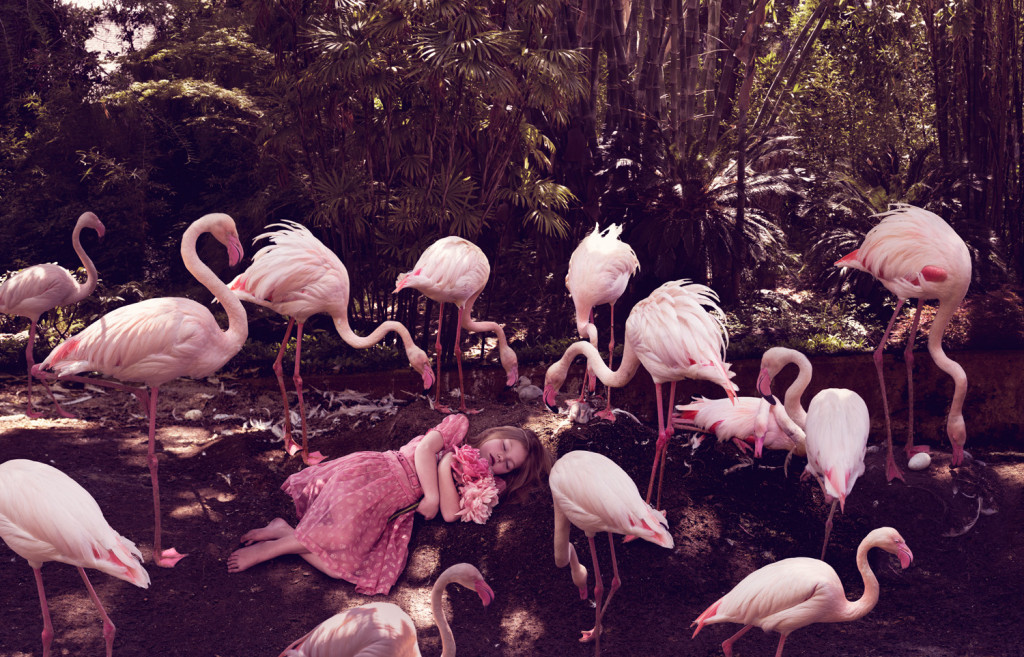
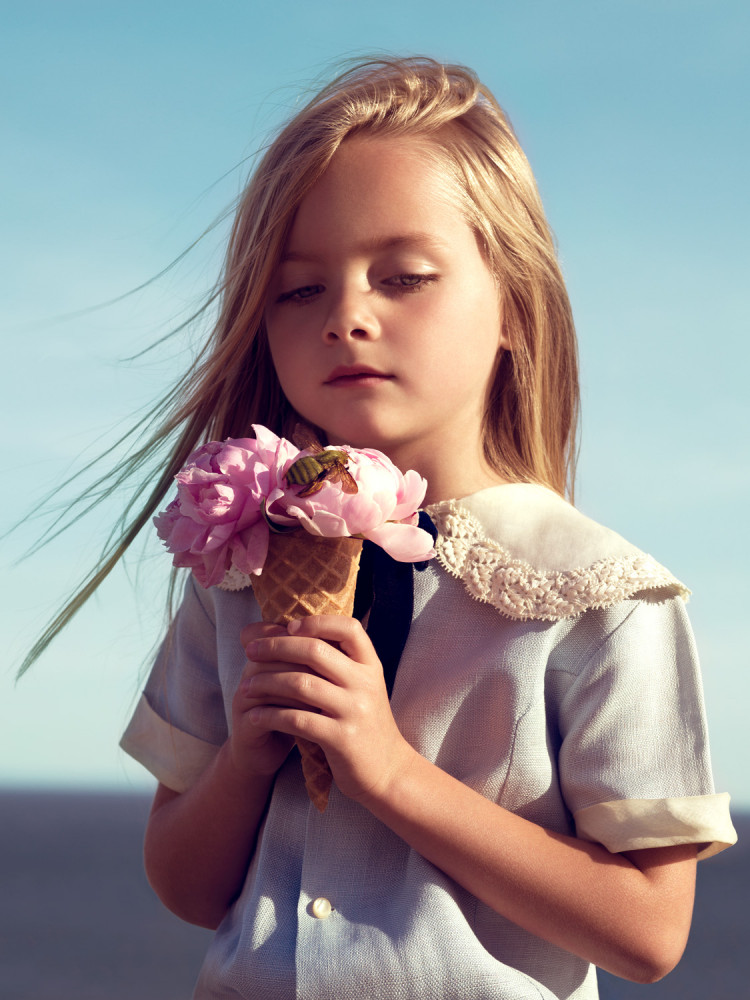
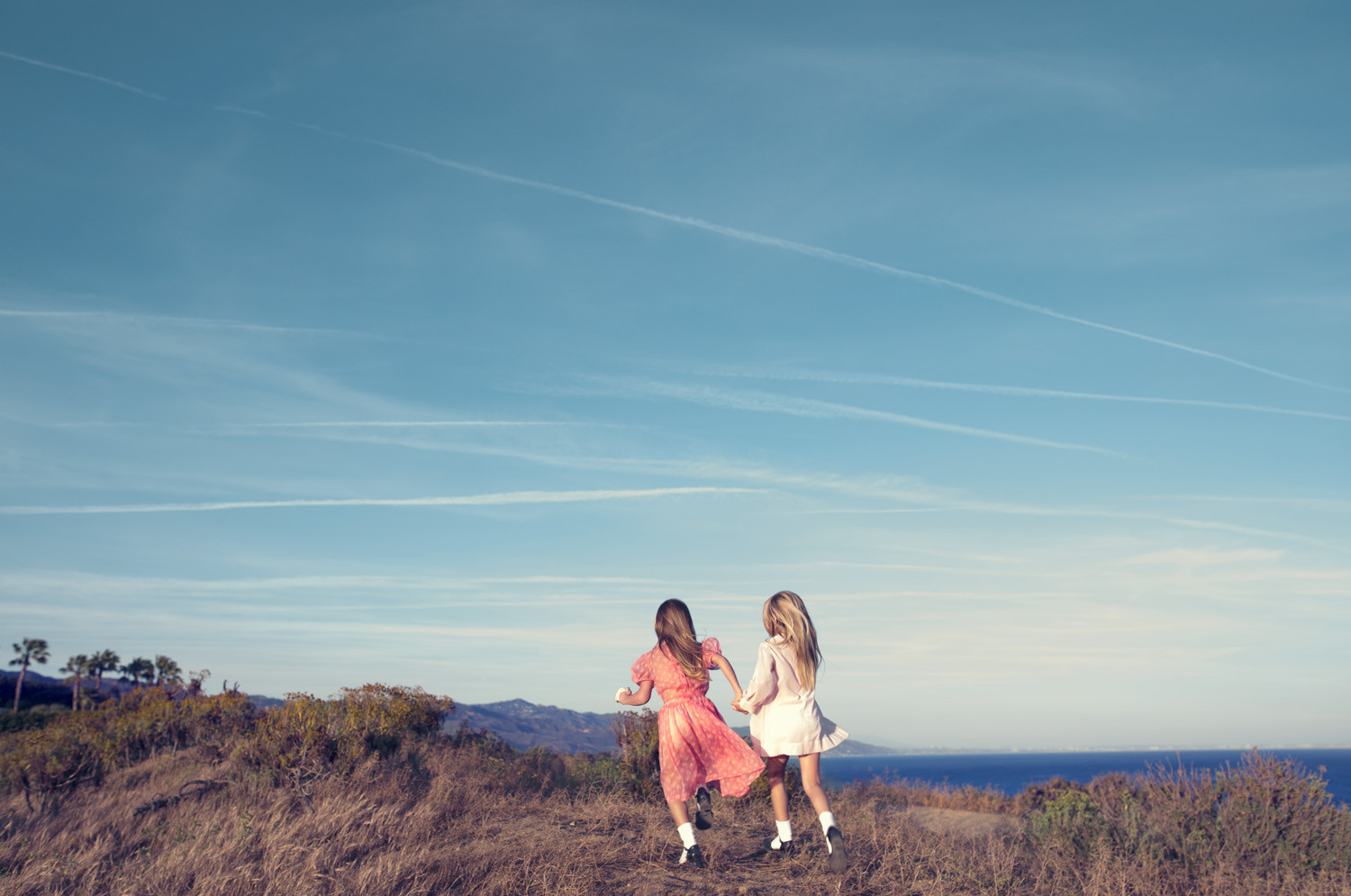
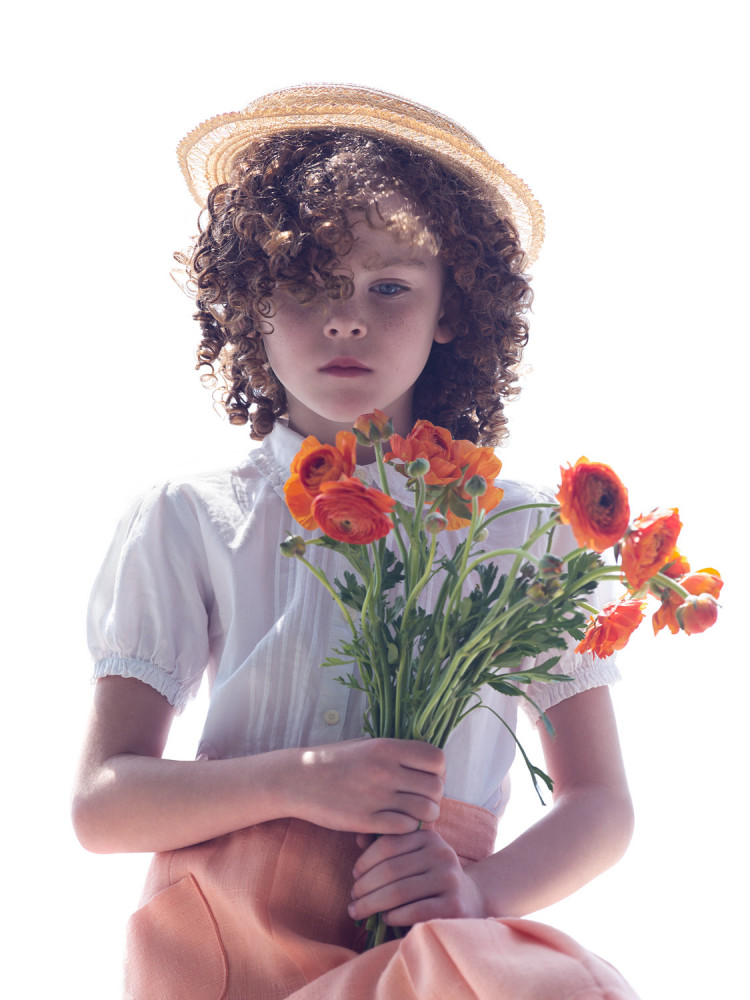
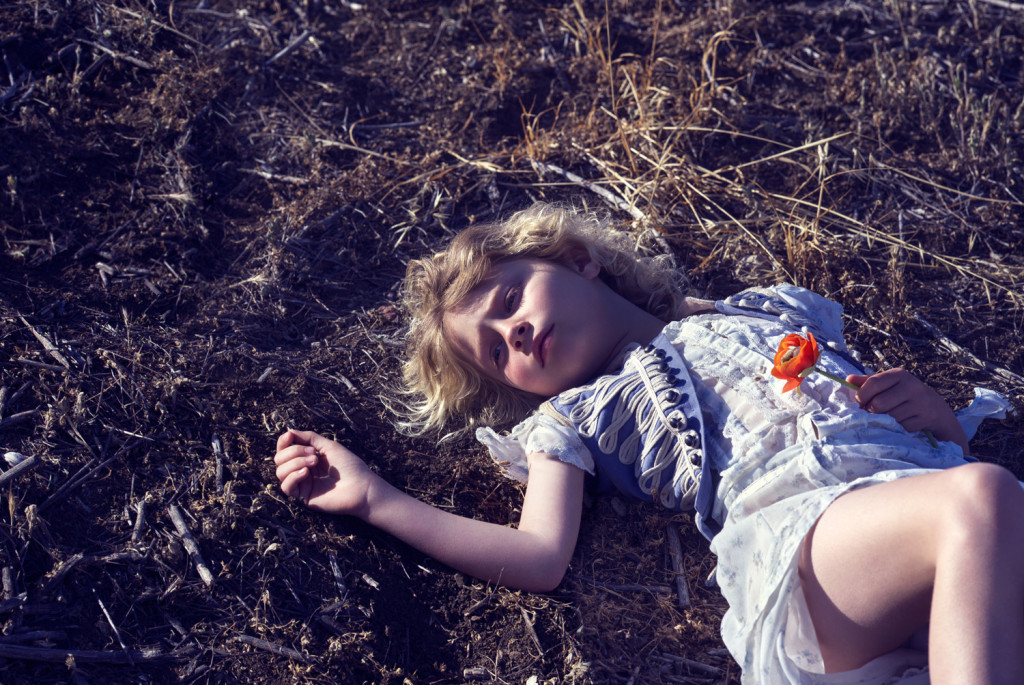
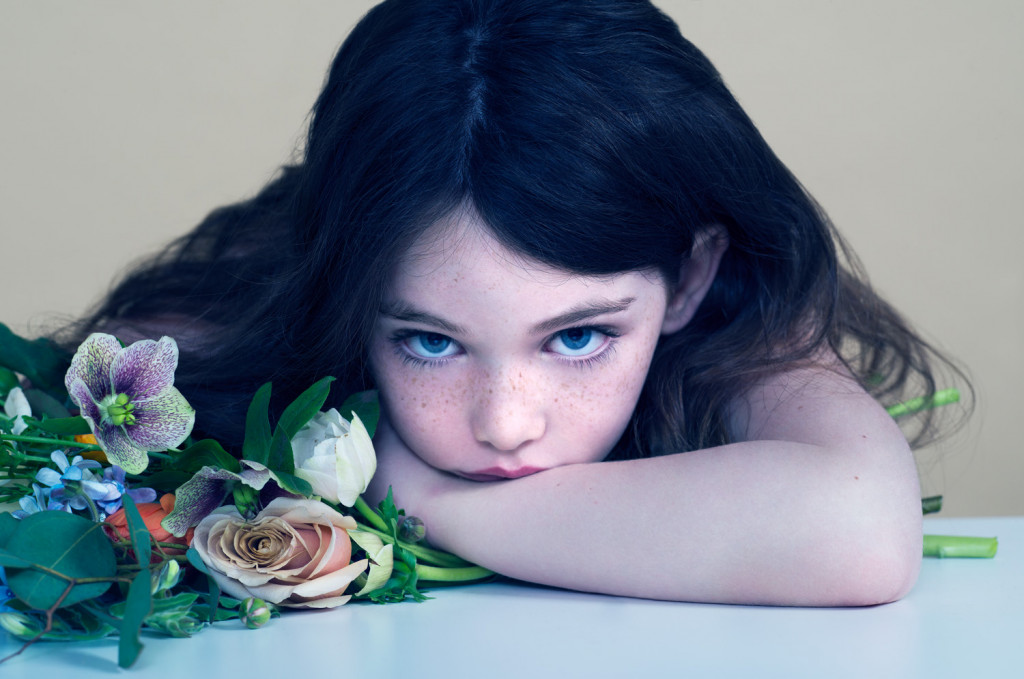














INTERVIEW
René & Radka

PHOPTOGRAPHY, STYLING, SET DESIGN René & Radka MODELS Isla, Eliette, Railey, Grace, Ava, Plum, Victor, Luca, Morgan CAMERA Leica S (007) with Summarit-S 35mm f/2.5 Asph., Summarit-S 70mm f/2.5 Asph. and APO-Macro-Summarit-S120mm f/2.5
Floriography, that flourished in Victorian England, is the cryptological communication of secret messages by means of flower arrangements, and was the inspiration for ‘Tussie-Mussies’, a series where the Los Angeles photographer duo Rene & Radka create pictures of children set in floral compositions. It is the spin-off of a long-term art project and hopes to culminate in an exhibition and a photo book.
S Magazine: You are a photographer duo – how does that work and how do you divide up the work?
René & Radka: We’ve been a team for 16 years. Our collaboration undergoes a development like with any other career, and it has many facets and phases. Radka is the creative spirit, the Art Director, and she usually holds the camera. … René takes care of the technical side, the lighting and the post-production. We’re both photographers with different talents and weaknesses.
You’ve had experience as fashion photographers in Paris, London, New York and now in Los Angeles. Are these different worlds and markets, or does it work pretty much the same wherever you are?
It’s different markets. Fashion at the international level works in a universal manner, but when you’re working locally each country has its own approach and its own taste.
You’ve been working on your ‘Tussie-Mussies’ art project for a long time. To what degree do you get art and commerce under one hat, and why do you value this artistic direction in particular? Are the ways of working different or do you increasingly apply this artistic approach to your commercial work?
We don’t see ourselves as fashion, art or commercial photographers. We see ourselves simply as creative people who express themselves through photography. Unless you come from a wealthy background or have other financial support, you always have to juggle between art and commerce. We’ve worked commercially for many long years, because that’s our source of income, but also because we like doing it. And it has taught us a lot, has allowed us to travel extensively and meet interesting people; they gave us the freedom to do what we love. Nowadays we try to invest more energy into our artistic projects, simply because, as artists, one grows with time and develops other needs.
To realise your own artistic projects is much harder, of course. You don’t have any strict deadlines, so you have to motivate yourself every single day and, like most other artists, struggle with typical doubts and insecurities. In contrast, commissioned work follows a clear course, a fixed time line and concept. We’re very good at just executing, but we’re always happier when we can also be involved in the art direction. I think our clients also expect that from us, and it’s very important to us.
‘Tussie-Mussies’ was deliberately conceived with the idea of an exhibition. Why? And it will have more chapters. Can you tell me about the whole project?
This small portrait series with the little girls and the flowers came about very spontaneously, in spring, the time of the year when everything’s blossoming; above all it arose because of our fascination with floriography, the language of flowers in Victorian times. Flowers and plants had very different meanings and functions for communication in that very strict era. The influence of the language of flowers grew so great that there were even flower dictionaries! Secret messages were sent with flowers, messages that wouldn’t have been acceptable out in the open. This mysterious aura surrounding both flowers and children has always attracted us. That’s where tussie-mussies comes from – they were small, aromatic bouquets that were often wrapped in small, lace cloths. They were composed of different herbs around a central flower – everything had a specific meaning. It’s a very complex form of communication!
To tell the truth, we always hope that these kind of projects will be strong enough to be exhibited, but you can’t really predict anything. We actually began with this concept as a small side project to a larger one, and it simply went on growing beyond what we had imagined. Of course, these kinds of photo shoots have to be prepared and elaborated, but you can’t really plan to take a picture on such and such a day that will make it into a gallery. Just like you can’t get up one morning and simply decide to compose a hit or a great song. It happens or it doesn’t. Some of the pictures don’t make it into the final selection. Even when you thought that you’d had a great idea, or when you had promised yourself a lot from a very complex production. Then you take a picture very quickly between a change of locations, very spontaneously and unprepared, and something special happens.
After all, photography is a medium that catches the moment – that’s the magic of it. That’s why art projects can take so long. I compare it to music once again: there are albums that were composed over one night, and there are others that took years to produce; nothing can be predicted. At the same time, it’s important to set yourself some sort of a deadline, a goal.
Up until the end of the year, it’s our aim to create a larger children’s project, an artistic short film, and to bring out a book next year. We’re trying to limit our fashion photography, and realise our own artistic projects more and more.
How is working with children? Is it more demanding, tougher or easier than with adults?
Children are very special beings, and the pure energy they exude is quite simply very inspiring. Of course, it takes a lot of energy to work with them, but you get a lot back as well. Children are more spontaneous and less controllable than adults; you have to work more quickly, to know exactly what you want, and how to convey that to the child. At the same time, you have to accept that the outcome may be very different to what you expected. That’s what makes the work very exciting.
In public perception, choosing children as a subject is often considered controversial. Have you had a similar experience and – if yes – how do you deal with it?
We’ve come to understand over the years that some people simply can’t make any sense of our photos of children; they find them bleak, eerie or something like that. On the other hand, others are delighted, see something completely different in them. We’re happy when we manage to provoke an emotion in people, even if it’s different to what we expected. We don’t take on any extremely provocative themes, so, as a result, we don’t feel limited in any way when working with children. The parents are always there or in agreement with the concept, and, because we are parents ourselves, we don’t go anywhere where we ourselves would feel uncomfortable.
What criteria do you use to choose the children? Do you know how the motif has to look and so chose the corresponding children?
It’s very different in each case. Sometimes we have a precise idea – like the girl with the crown of flowers and the black bird – and so we look for the character that fits, sometimes we meet a kid and simply want to do something with him or her. We work with children model agencies, with our friends’ children, with friends of our son...
At times the pictures are very opulent. To what extent have these images been composed?
Our work is based on photographing in real as much as possible, instead of adding at lot in post-production. We tend to use the computer to help polish up the pictures, but most of it is staged for real on the set.
Who helped you with the styling, or did you do it yourselves?
As a photographer, you always need to know how you visually imagine the picture, and learn to communicate that. The collaboration with the stylist is very close and it’s one of the most important ones. We do the styling ourselves for the art series with the children, because we have a vision that we can best realise ourselves. It’s the same with the set design and the props. On the whole we use no make-up for the children, unless it’s to create a special mask or a character; but that’s rare.
At times the pictures have a very analogue look. To what degree did you create this look deliberately, and what roles do the lenses you use play?
We belong to the analogue generation. We learnt how to load a film, to develop negatives and, for many years, we produced prints in our own laboratory. In both colour and black and white. We try to bring this heritage into our digital work. Having said that, it’s clear that a good lens is a must, especially if it generates this analogue touch, like Leica lenses do. The colour reproduction, contrasts and light also play an important role. We love the look of analogue photography – that’s what we are.
Roughly how long roughly did it take you to complete one picture, and how long a time-line do you set for such a project?
It’s very varied: some pictures required an extremely long post-production, like, for example, the girl with the flamingos or with the crown of flowers. We created the crown of flowers ourselves, but also all the levels for the perfect composition, that René spent over a month weaving together until we were satisfied. Of course, the flamingos are also composed, even though we did try to photograph a lot that’s real; but you can’t always control animals, and certainly not these pink birds. On the other hand, the series also includes pictures that hardly needed any processing. Often, however, half a year can pass from the basic idea, to the photo shoot and then the final retouching.